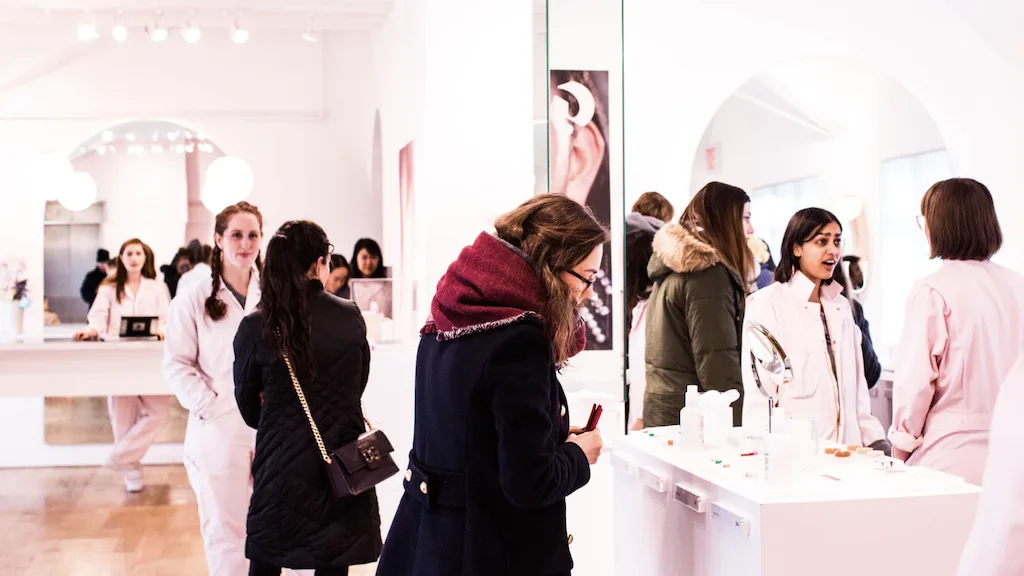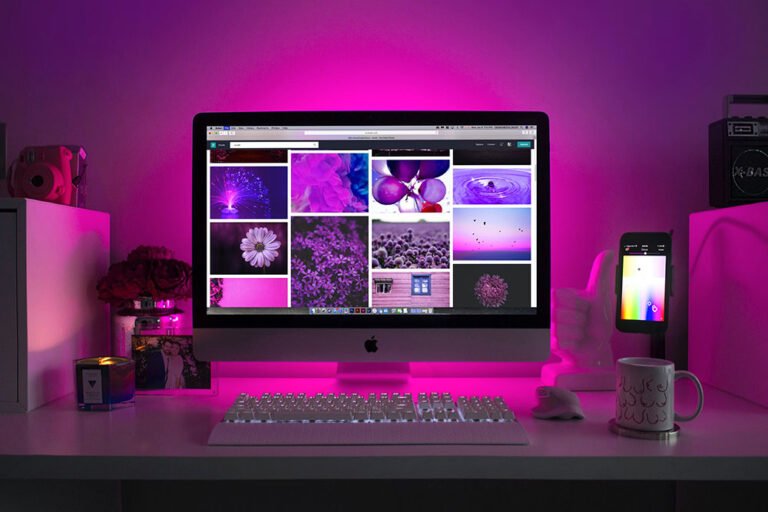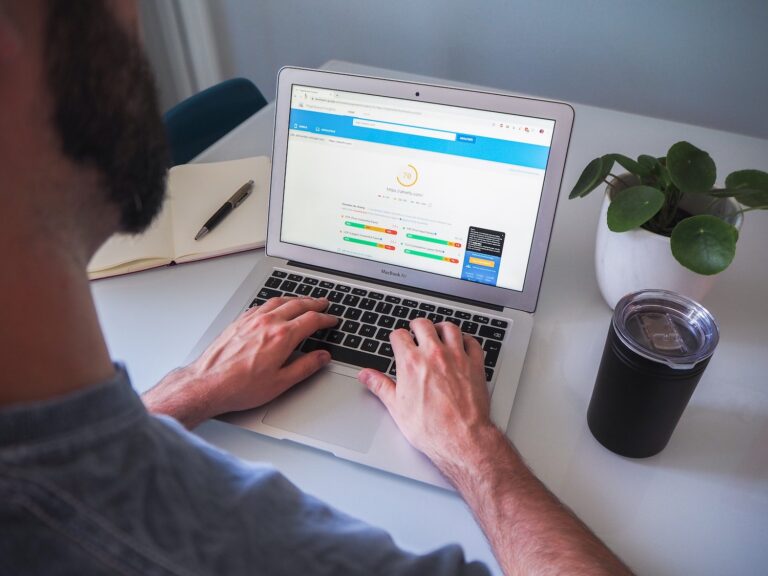
Pop-up stores can be a fantastic way to test out new products, reach new customers, and generate buzz for your business. In this article, we will be sharing four practical strategies that you can use to increase the value of your pop-up store and drive success for your eCommerce business.
Whether you’re just starting out, or looking for new ways to optimize your existing strategy, we’re confident that these helpful pointers will maximize your store’s success. So without further ado, let’s get started — here are five ways to squeeze more value from the pop-up store model:
Provide a Full Hybrid Shopping Experience
Table of Contents
Though making some money from in-person buys is obviously important, the core purpose of a pop-up store should be to raise awareness of your brand and drive traffic to your store. After all, that’s where most of your buys will always be. Accordingly, to maximize the effectiveness of your pop-up, you need to entwine the experience with online activity.
The average visitor to your pop-up store should leave enthused to start buying through your online store — but if you want to make that happen, you’ll need to incentivize it. There are several ways in which you can manage this. Let’s go through them:
Firstly, you should provide an offline buying experience that’s reflective of your online experience. This is what hybrid selling is all about. Instead of simply grabbing some products and asking for cash in an amateur fashion, you should use your online system to process all your offline sales, essentially meaning that an offline customer is also an online buyer.
Secondly, you can distribute relevant marketing material at the event to entice people to visit your store. Giving visitors cards with discount codes and special offers on them is a great way to proceed: if they want to take advantage of those codes and offers, they’ll have to head to your store. This can actually be enough to set you apart from a competitor. The point of conversion presents a particularly-strong opportunity for presenting offers, but that’s not all: you can also use it to prompt email newsletter signups by having email-exclusive deals.
Thirdly, you want to encourage customers to share their experiences at the store on social media — ideally, live from the store. One way you can do this is by having a stand in front of which customers can take photos, offering each person who does so entry into a prize draw. This can give your online engagement an instant boost and further expose your brand to everyone affiliated with those you’ve already been able to attract.
Collaborate with Other Brands and Influencers
No matter how you feel about influencer culture or using outside figures to promote your brand, collaborations continue to be one of the pillars of effective marketing. This is particularly true for pop-up stores, success with which can often hinge on the notable names attached to their launches.
Where possible you should look to feature influencers, brand advocates, and other social media stars as part of your pop-up store experience. This reliably pushes their audiences to attend in an effort to meet them (and possibly talk to them), helping to attract people who might not previously have been familiar with your brand.
You can use these figures to promote future pop-up store events online. Influencers can talk about upcoming events in their Instagram stories, and you can even encourage them to write blog posts covering their links with your brand. Content marketing always matters, and it’s even better when you work with a partner.
Likewise, you should look to collaborate with other brands, even to the extent of opening a shared pop-up store selling products from both of your lineups. Many huge brands have found success through limited-time pop-up store collaborations, helping to draw their audiences together. This is particularly useful for growing brands because being associated with established brands leads people to view them as legitimate.
Collaborations are a fantastic way of supporting causes that share a similar ethos with your own, too. For instance, if you sell reusable water bottles, partnering with an organization that cleans the oceans of plastic would be a great idea. There must be things you care about beyond money, so show that. The result will be that you’ll profit in both ways.
Focus on limited-time offers and products
Part of what makes a pop-up store so successful and compelling is its ephemeral nature. If you’re a customer, any chance you get to visit it could be your only opportunity to enjoy the unique experience. When running a pop-up store, you need to capture that sense of exclusivity and run with it.
Offer a subscription service through your online store? Why not provide an exclusive subscriber benefit by granting early access to your pop-up store? The subscription-based business model has seen a huge rise in popularity in recent years, and implementing a recurring revenue strategy can prove incredibly lucrative.
Provided it’s feasible to distill part of your store’s offerings into a subscription service, doing so is relatively simple; if you run your store through Shopify, for example, all you have to do is choose a compatible subscription app and a subscription management platform. Once that’s taken care of, be sure to add all your subscribing customers to a separate, members-only mailing list, and distribute unique ‘access codes’ for your physical store.
There are a huge number of businesses, particularly in the fashion market, that have made their names by producing limited runs of products to drive up prices, create a sense of urgency and make their brands feel more exclusive. Even if you generally operate with a consistent product range (and don’t want to introduce artificial scarcity), it can help to produce at least one exclusive item or collection for your pop-up store.
Most importantly, this kind of exclusivity will give your pop-up shop one more unique element that can be promoted on social media. Take the opportunity to match a one-off event with a one-off product. Social ads targeted at the locations of your future stores can help you drum up further interest ahead of schedule.
Promote the idea of posting these special-edition items in ways that will add to their sense of exclusivity. You could, for instance, give each one a unique number: this is something that often tacks on a huge amount of value, particularly for collectors. Get it right and many people who don’t attend a given release will feel regretful, leading them to commit to attending future events.
Use Some Attention-Grabbing Themes
The modern incarnation of the pop-up store hasn’t been around for that long, but even so: it’s been done. All the elements have been featured before. No one will be rendered agog upon discovering that an eCommerce brand is selling things in person. If you want to stand out, you need to make your store different, and having a theme is one way to do that.
Research what themes have worked for other brands of similar stature in the past. It also helps to research your fanbase, seeing if there is an obvious crossover between your audience and that of other brands, themes, and social causes. Working with a charity, for example, can help raise awareness for a cause your audience cares about and bring in more possible customers.
If you’re running the store for multiple days (unlikely, yes, but possible), then you can even have a different theme for each day. You could focus on budget-friendly buys one day, for instance, and concentrate on luxury products the next. This is a great way to keep everything feeling different and encourage multiple visits. It can also bring diversity to the overall attendance by catering to various people interested in different things.
Set a Specific Goal Before you Deploy
It’s a persistent truism that you need to have a clear goal before you commit to a business project. Most things are iterative, and pop-up stores are no different. How your first attempt goes is almost insignificant. What matters is how your subsequent efforts work out — and if you don’t know how to rate the success of each attempt, then you won’t be able to make the next one better by addressing any deficiencies.
Are you mostly looking to make direct sales through your store? Use it as part of an audience-building exercise. Expose your brand to new markets? Promote exclusive products? Whatever you land on, you need to have a concrete aim to make your pop-up store feel coherent and not confuse customers who may have simply stumbled upon it.
Your decision will help guide your marketing approach and dictate the kind of content you produce in anticipation of your pop-up store. An essential part of yielding success is to ensure that the entire operation is as professional as it is unique and creative. Doing something different and interesting is great, but it won’t matter if prospective customers feel that they can’t rely on you to offer a good buying experience and service.
Despite everything that’s happening in the world today, the humble pop-up shop remains a viable option — and it’s one that many brands still choose to ignore, leaving a lot of room to take advantage. If you decide to go ahead with running a pop-up store, these tips will help you make the most of it.






